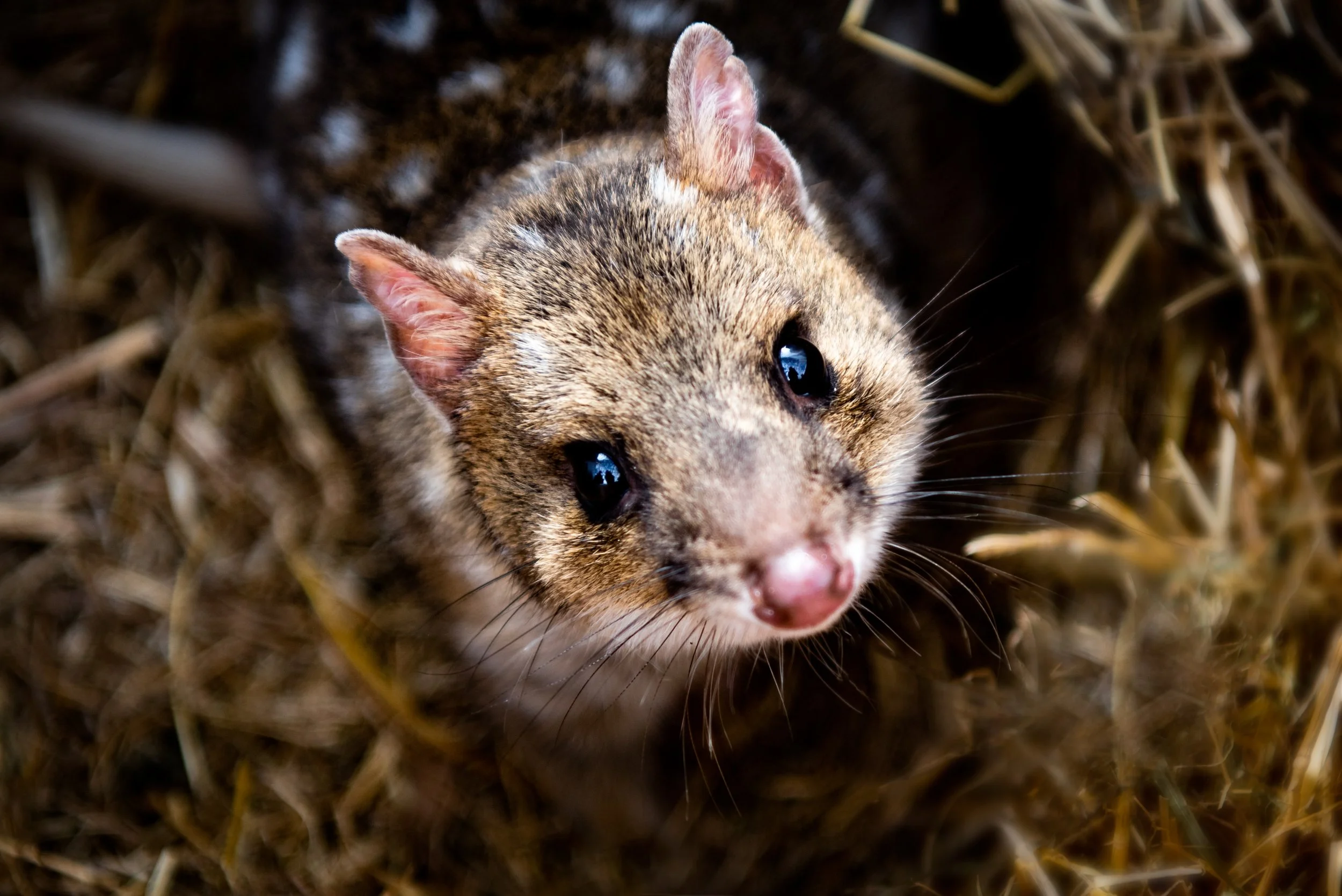
EASTERN
QUOLL
The eastern quoll (dasyurus viverrinus) is a striking, carnivorous marsupial that was once widespread across southeastern Australia. Today, it is extinct in the wild on the mainland and survives only in Tasmania and in a few reintroduced, mainland populations. Odonata’s sanctuary network is home to two of only three wild mainland self-sustaining populations, playing a critical role in this species' survival.
Physical description
Eastern quolls are medium-sized with soft, spotted fur that ranges from fawn to black, and a thick, bushy tail. Males weigh around 1.3 kilograms and females approximately 900 grams. Males measure between 53–66 cm including the tail, with females slightly smaller. Solitary and agile, eastern quolls are active hunters and display high levels of alertness, making them well-adapted to nocturnal life.
Habitat and distribution
Historically, eastern quolls lived throughout Victoria, New South Wales, and Tasmania. They now exist only in Tasmania and reintroduced sanctuaries like Mt Rothwell, Tiverton and Milligan Flat Woodland Sanctuary. They prefer dry grasslands, open woodlands, and edges of farmland, which provide access to prey and denning sites.
The dramatic decline of the species was driven by habitat destruction, fox and feral cat predation, disease, and changes in fire regimes. Hunting by early European settlers, who placed a halfpenny bounty on quolls, further accelerated their disappearance. In Tasmania, climate change and the spread of feral cats continue to pose major threats.
Behaviour and diet
Eastern quolls are nocturnal and occupy individual home ranges spanning 35–44 hectares. They hunt and forage at night, feeding on a variety of small mammals, insects, bird eggs, fruits, seeds, and carrion. Their opportunistic diet makes them a key controller of pest species and contributors to ecological balance.
Breeding
Mating occurs from mid-May to early June. After a short gestation of 19–24 days, up to 30 young are born, each the size of a grain of rice. Only six to eight can survive, attaching to the mother’s teats for nourishment. Weaning occurs around 150–165 days, and the young reach sexual maturity by the next breeding season. Eastern quolls typically live for two to four years in the wild.
Conservation status
LC
NT
VU
EN
CR
EW
EX
Least Concern
Near Threatened
Vulnerable
Endangered (EPBC Act 1999)
Critically Endangered
Extinct in the Wild
Regionally extinct
Threats
Predation by introduced species, especially foxes and feral cats.
Habitat destruction and fragmentation.
Historical overhunting.
Disease and climate impacts (especially in Tasmania).
Lack of safe wild habitats on the mainland.

Success in the field
Odonata manages two of only three semi-wild, self-sustaining eastern quoll populations on mainland Australia, at Mt Rothwell and Tiverton sanctuaries.
Since 2002, Mt Rothwell has led captive breeding and release efforts, creating a genetically diverse, resilient population. The program has successfully bred hundreds of quolls and established a robust insurance population.
Eastern quolls are monitored with both periodic genetic monitoring and remote sensing cameras at both Mt Rothwell (estimated 40–70 individuals) and Tiverton (up to 140 individuals). Their elusive nature makes population tracking difficult, but consistent monitoring has shown stable populations in both locations.
Future plans include:
Expand the Mt Rothwell and Tiverton populations
Scale up captive breeding efforts and confirm commitments for future supply to further sites
Continue long-term monitoring and genetic management to ensure the species’ survival


